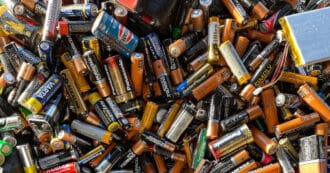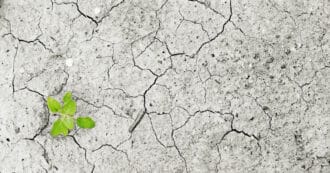By Sydney Cohen – When you finish painting your house, the last thing you can do is throw away all of those cans and leftover paint in the household trash. There are a few options that make disposal safe!
Can You Dispose of Paint?
How to dispose of paint varies depending on the type of paint that needs to be thrown away. Paint on petroleum-based surfaces can pose a health threat to vulnerable groups such as infants, children in pregnancy, and senior citizens. Latex-based paints have more toxic chemicals to withstand extreme heat than oils.
Paint must be dried before it is disposed of, as often wet paint has toxic substances and chemicals. Before drying the paint you can thicken it. When the paint is dry, you can dispose of it in the recycling box. If no paint is left behind, peel out the lid to dry. There are also several commercial paint hardening devices available.
Throwing out leftover paint containers is a less effective alternative to taking the proper care to recycle the can. If there is any leftover paint in the container, you must ensure that the container is sealed properly before disposal.
How To Dispose of Paint
Throwing out paint creates the possibility that its hazardous chemicals will reach the environment and contaminate soil or water. If discarded paint from recent projects is sitting around, you will probably need to use a guide to recycling unused paint. Paint manufacturers often give instructions on the original label on how to dispose of the paint, so that it is not considered hazardous waste.
Latex Paint
Latex paint or water based paints can be applied to various surfaces. They have many advantages over other types of paint, such as the fact that it’s more durable and offers better coverage. However, you must be sure to dispose of leftover latex paint in the proper way, so that it is not considered as hazardous materials.
Disposal of Latex Paint
Many disposals and recycling facilities require solid latex paints and chemicals to be removed at landfill locations. This means you might have to dry out the latex paint before disposing of it, but fortunately, this process is not too complicated and can easily be done with ordinary household products.
To dry out the paint, you can try mixing cat litter or shredded newspaper into the wet paint. You can get paint hardeners in most retail locations. Add it to the wet paint, mix it, and make sure everything is sealed properly before putting it in the trash, in order to avoid the hazardous waste drop.
Oil Based Paint
Oil-based paint is a type of painting that has been around for centuries. It’s still popular today because it covers well and has a long shelf life. However, you must make sure the old paint is completely dry before you properly dispose of it.
Disposal of Oil-Based Paint
Some oils in paints contain toxic substances. If disposed of improperly, oil-based paint might negatively affect drinking water in the region. So, instead of just throwing oil-based paints in the garbage, contact your local municipal waste authorities about disposal methods for oil-based paints.
Recycling Paint Cans
There are many ways to reuse and recycle empty paint cans.
Paint cans can be recycled, although they must contain no paint. Generally, after paints dry completely they can be discarded into normal trash. To reuse paint cans that contain latex, pour all the remaining paint into a new container. After cleaning out all your waste containers, you can recycle them.
Again, not all curbside recycling programs accept paint cans easily. You can check with your local city waste department or municipality to see if there are restrictions to recycling paint cans, more information or other options that they offer.
Religion and Paint Pollution
Environmentalist Hindus in India are working to change a custom that is causing paint pollution in rivers. An article in Reuters describes how idols are worshipped and then taken to be immersed in water. However, these idols are often “painted with toxic dyes” and these toxins “contaminate food crops when villagers use the polluted water for irrigation.” And even if the water isn’t used for irrigation, the paints “contain metals like mercury, cadmium and lead, which can pass up the food chain from fish to human beings”.
Traditionally these idols were made from mud and clay and painted with vegetable-based dyes, thereby causing little or no damage to the environment. But today, “people want bigger and brighter idols and are no longer happy with the eco-friendly statues.” In this example, as is often the case, we need to find a way to balance people’s desires with the needs of nature. In the words of Manisha Gutman of environmental group Eco Exist, “if we do not respect nature then we are not respecting God”.
Paint Disposal Advice
Before starting to paint a painting project, consider taking measurements. This gives you precisely how much paint to buy so that none is wasted.
Ensure leftover paint is kept in an open place without excessive shade and temperatures. Secure the lid with a rubber band. This way, we can reduce the negative environmental impact that the discarding of wet paint has!
Looking to learn more about preventing pollution? Check out our blog post on the costs of oil pollution.








